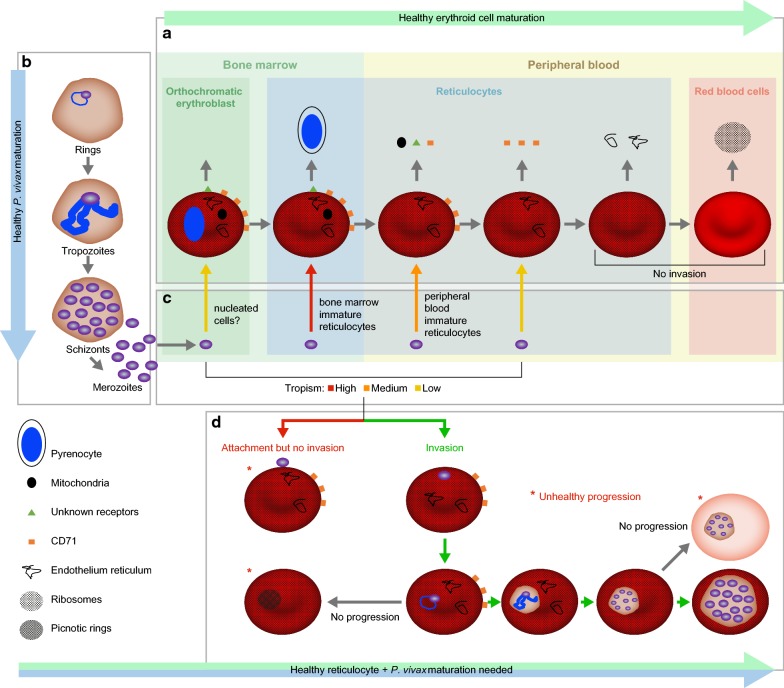Fig. 1.
Diagram of the processes occurring during P. vivax long-term in vitro blood stage culture. Depiction of processes involved in the development of the parasite (invasion, maturation and egress) and the reticulocytes (maturation) including healthy progression and road-blocks observed in P. vivax in vitro long-term culture attempts. a The healthy erythroid cell maturation from orthochromatic erythroblast in the bone marrow to mature red blood cell is depicted. During this process the erythroid cell first expels the nucleus in form of pyrenocyte. Thereafter, it loses the mitochondria, different surface proteins (including the CD71) and, finally, the reticulum and the ribosomes. b The healthy maturation of P. vivax is depicted from rings to trophozoites to schizonts and the egress of merozoites. c The tropism of P. vivax merozoites for the different cell-types produced during the healthy erythroid maturation is examined and depicted using different arrow colors for high, medium, low. d The joint development of P. vivax parasite and the reticulocytes they have invaded is portrayed including anomalies in P. vivax invasion (adhesion but no invasion) and development (picnotic rings, lack of proper maturation of schizonts), which result in no progression and are marked by a red star

